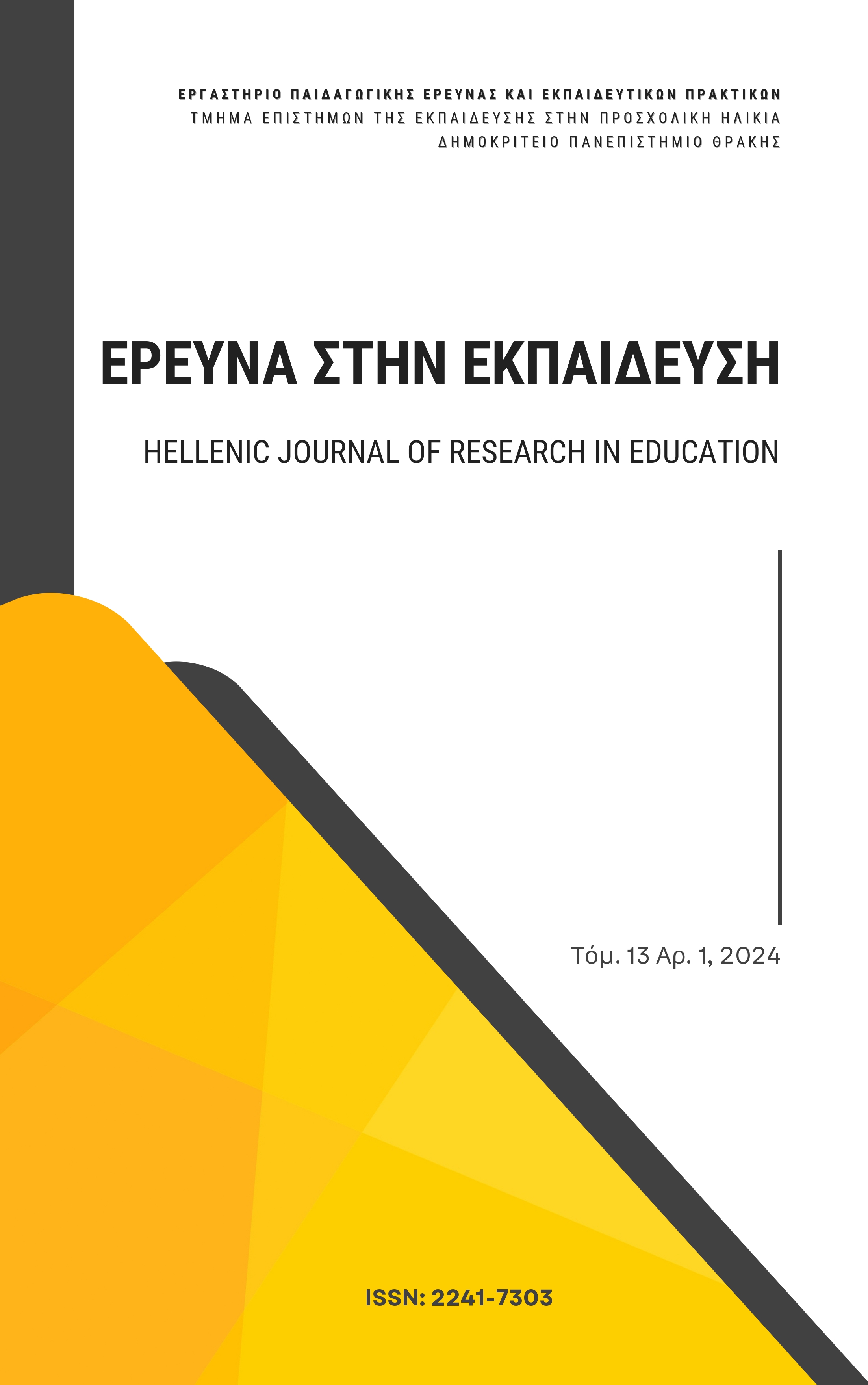Η έννοια του «σχολικού μουσείου» ως μια εναλλακτική μορφή συνεργασίας σχολείου και μουσείου

Περίληψη
Η διασύνδεση σχολείου και μουσείου πραγματώνεται, συνήθως, μέσω των σχολικών επισκέψεων σε μουσεία. Στη γενικότερη, όμως, κατεύθυνση ενίσχυσης αυτής της σχέσης, ανακύπτουν ερωτήματα σχετικά με τις δυνατότητες εναλλακτικών μορφών συνεργασίας. Οι συλλογές υλικού πολιτισμού στο πλαίσιο της λειτουργίας σχολικών μονάδων θα μπορούσαν να αποτελέσουν μία αφορμή και μορφή εναλλακτικής συνεργασίας με εκπαιδευτικά οφέλη και ποικίλες προεκτάσεις. Λαμβάνοντας υπόψη τις σύγχρονες προσεγγίσεις διασύνδεσης εκπαίδευσης και πολιτισμού, η παρούσα εργασία εστιάζει στις συλλογές αυτές, ή αλλιώς «σχολικά μουσεία», και αποτελεί μία βιβλιογραφική ανασκόπηση, με σκοπό να καταγράψει μελέτες και έρευνες σχετικά με τη συγκρότηση, τον ρόλο καθώς και την εννοιολογική οριοθέτηση αυτών. Τα αποτελέσματα ανέδειξαν ότι η έννοια και οι πρακτικές «σχολικών μουσείων» έχουν μακρά ιστορία. Μεγάλο μέρος των δεδομένων αφορούν σε μελέτες εκπαιδευτικής ιστοριογραφίας παρουσιάζοντας διαφορετικές περιπτώσεις «σχολικών μουσείων», ενώ ένας σημαντικός αριθμός ερευνών πραγματεύονται ζητήματα σύγχρονης μουσειοπαιδαγωγικής εφαρμογής. Ωστόσο, στη χώρα μας αποτελεί ένα πεδίο που χρήζει περαιτέρω έρευνας.
Λεπτομέρειες άρθρου
- Πώς να δημιουργήσετε Αναφορές
-
Κυριάκου Μ., & Κανάρη Χ. (2024). Η έννοια του «σχολικού μουσείου» ως μια εναλλακτική μορφή συνεργασίας σχολείου και μουσείου. Έρευνα στην Εκπαίδευση, 13(1), 190–206. https://doi.org/10.12681/hjre.37600
- Τεύχος
- Τόμ. 13 Αρ. 1 (2024)
- Ενότητα
- Άρθρα

Αυτή η εργασία είναι αδειοδοτημένη υπό το CC Αναφορά Δημιουργού – Μη Εμπορική Χρήση – Παρόμοια Διανομή 4.0.
Τα πνευματικά δικαιώματα των άρθρων του περιοδικού ανήκουν στους συγγραφείς. Τα άρθρα διατίθενται με άδειες Creative Commons CC-BC-SA 4.0



